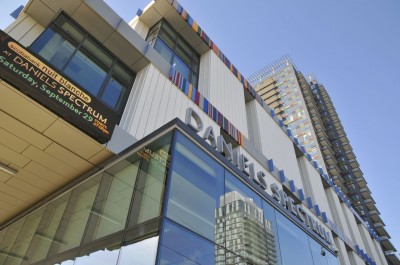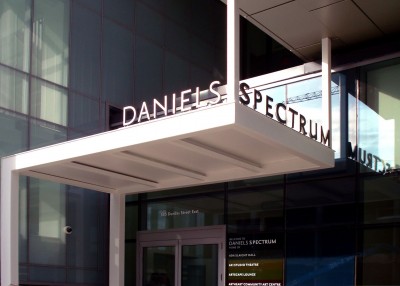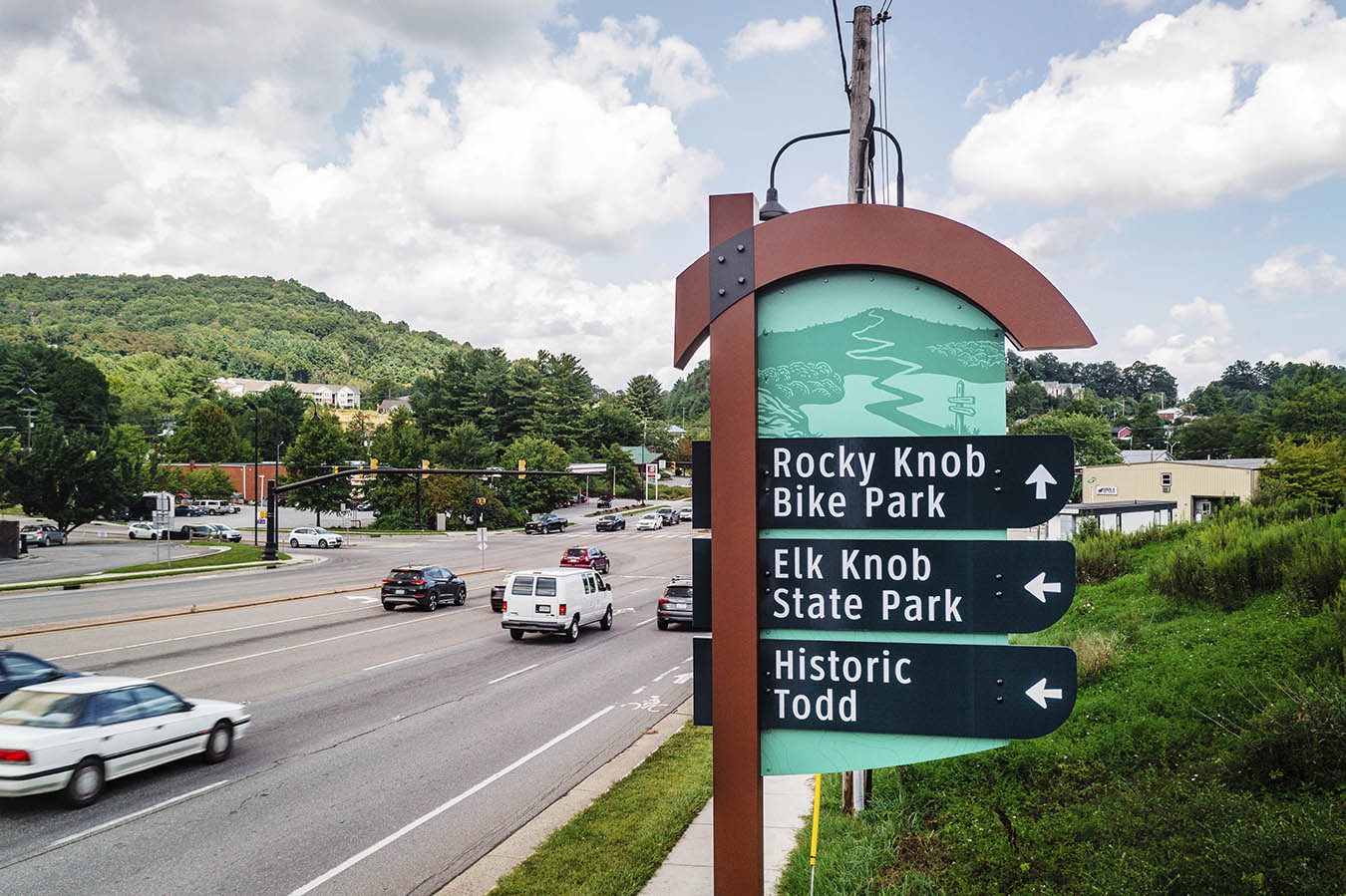Environmental Graphic Design: Celebrating diversity at the Daniels Spectrum

By Udo Schliemann
The Daniels Spectrum, a new arts and cultural centre for Toronto’s Regent Park neighbourhood, opened in September 2012 on Dundas Street east of Parliament Street. The colourful facility was designed by Toronto-based Diamond Schmitt Architects to provide a hub for cultural exchange and collaboration.
“It’s a place where, at the core, cultural diversity is celebrated,” says Seema Jethalal, managing director of the Daniels Spectrum. “It’s rooted in Regent Park and open to the world.”
The 5,574-m2 (60,000-sf) centre was envisioned as the artistic, cultural and social heart of a revitalized neighbourhood, sitting across the street from a large park and a new aquatic centre. It houses seven tenant organizations representing art, music, social and cultural innovation, learning and youth programming.
“Culture is based on three Vs: value, vibe and virtuosity,” said Glen Murray, MPP for Toronto Centre, at the facility’s opening ceremony. “It adds value to our lives, creates an interesting vibe and engages people with virtuosity who strive for excellence. Beauty is necessary—and necessity must be beautiful, not just utilitarian.”

Indeed, design has been key to the building’s development, including not only the work of Diamond Schmitt, but also wayfinding concepts by a team of designers at Toronto-based Entro Communications, including Tobias Mikl, Michelle Parrish, Darren Rodenkirchen, Ian White and Richard Anthistle.
The history of Regent Park
Originally built in 1949 and expanded throughout the early 1950s, Regent Park was Canada’s first public housing project. At the time, its clean and modern row houses and apartment buildings seemed like an ideal solution for the problems faced in low-income communities. They were inspired by the visions and planning of leading modern architects, such as Charles-Édouard Jeanneret (better known as Le Corbusier) and Walter Gropius, founder of the Bauhaus/Gestaltung school of art and design.
Over the years, local demographics changed. Regent Park, along with nearby St. James Town, became a centre for new immigrants who arrived from Asia, Africa and the Caribbean. Today, Regent Park remains one of the most diverse and vibrant communities in Toronto, with more than 56 different countries of origin and 47 languages represented and a wide range of cultural and social traditions.
Regent Park was referred to in its early days as both a ‘garden city’ and a ‘radiant city,’ but it eventually turned out to be problematic, isolated and neglected, with decaying buildings and infrastructure. In the early 2000s, the city’s government and Toronto Community Housing (TCH) proposed a 15-year revitalization plan to transform the neighbourhood, creating a geographically, socially and economically integrated mixed-income community.







